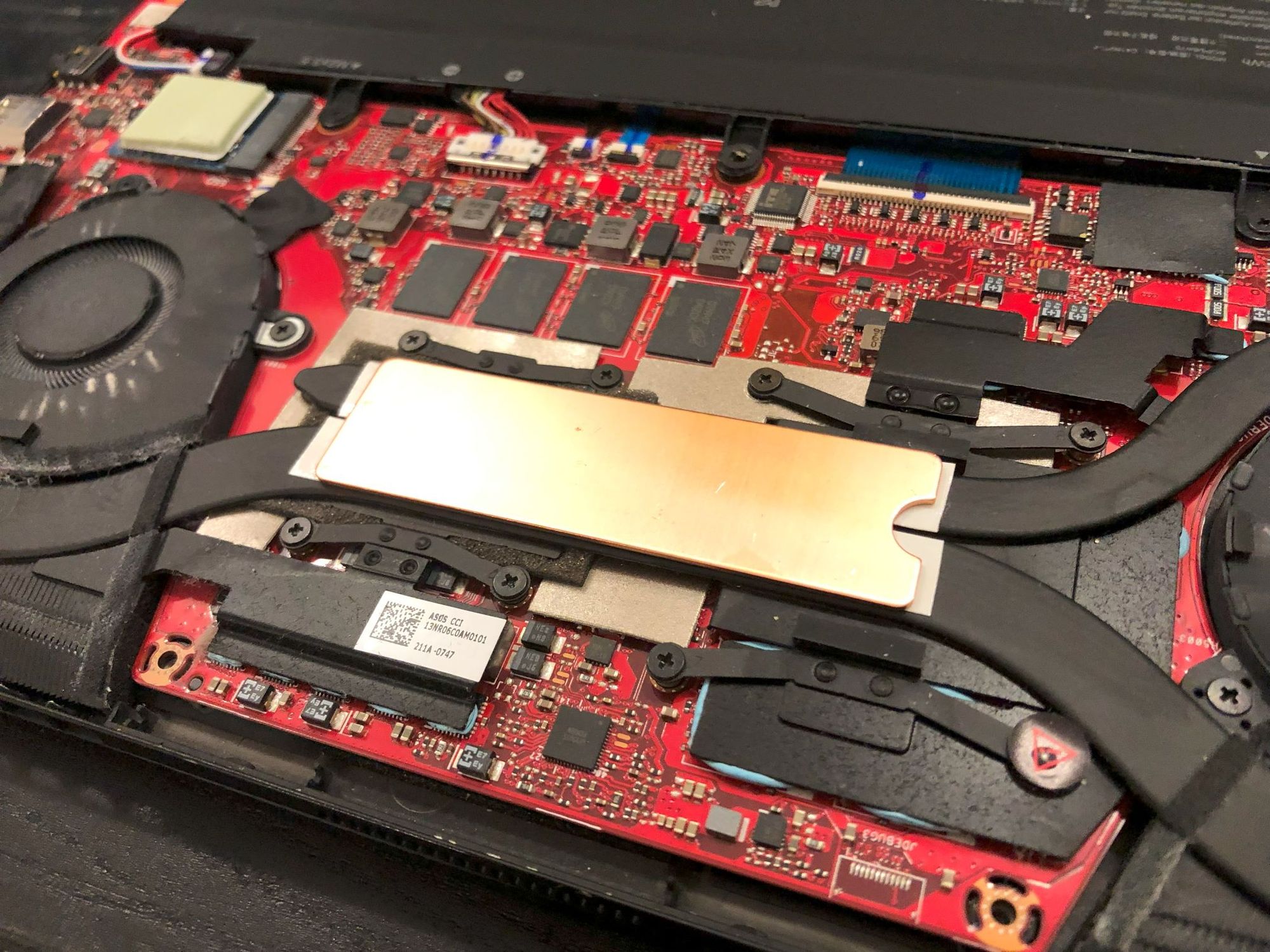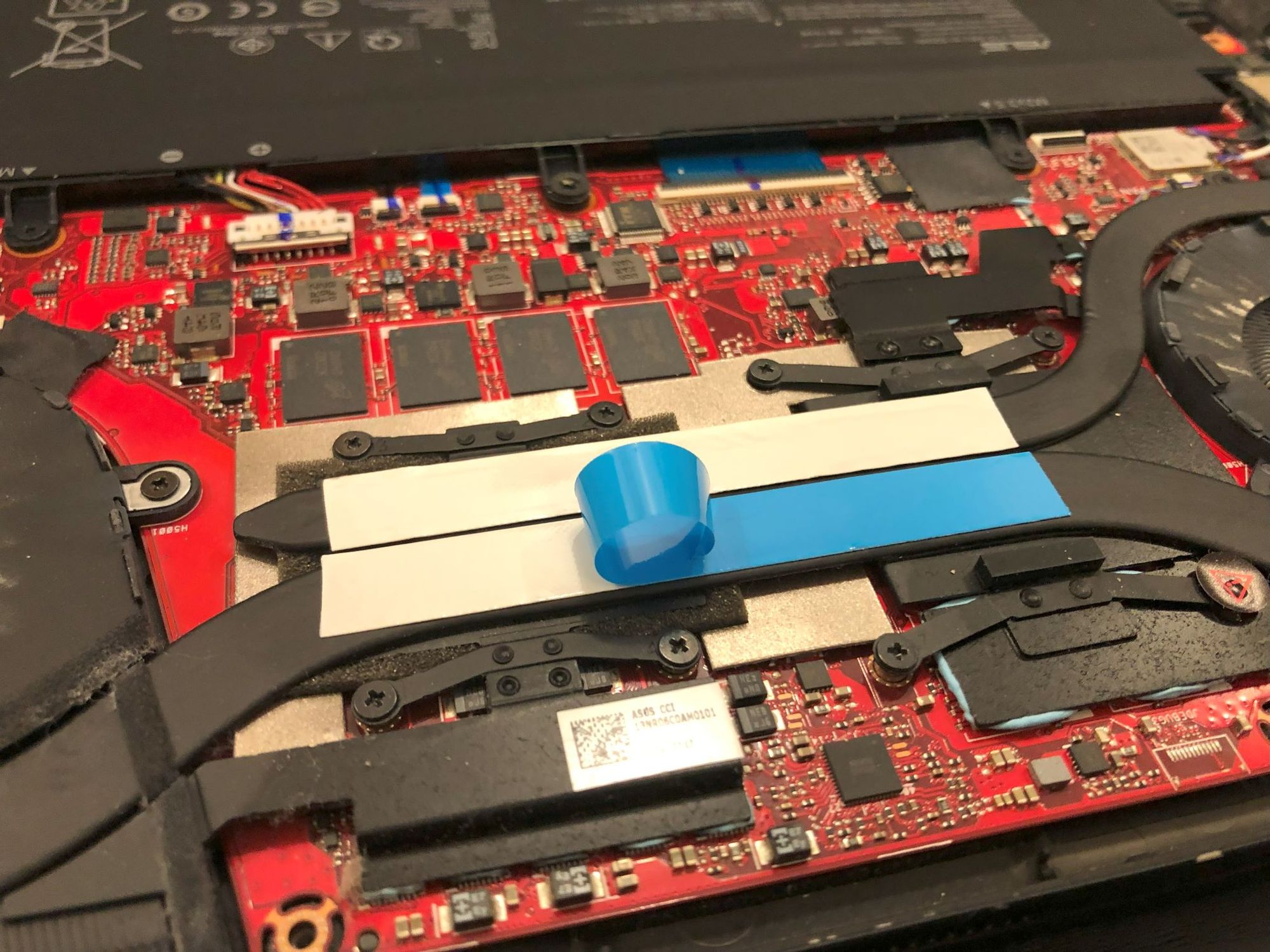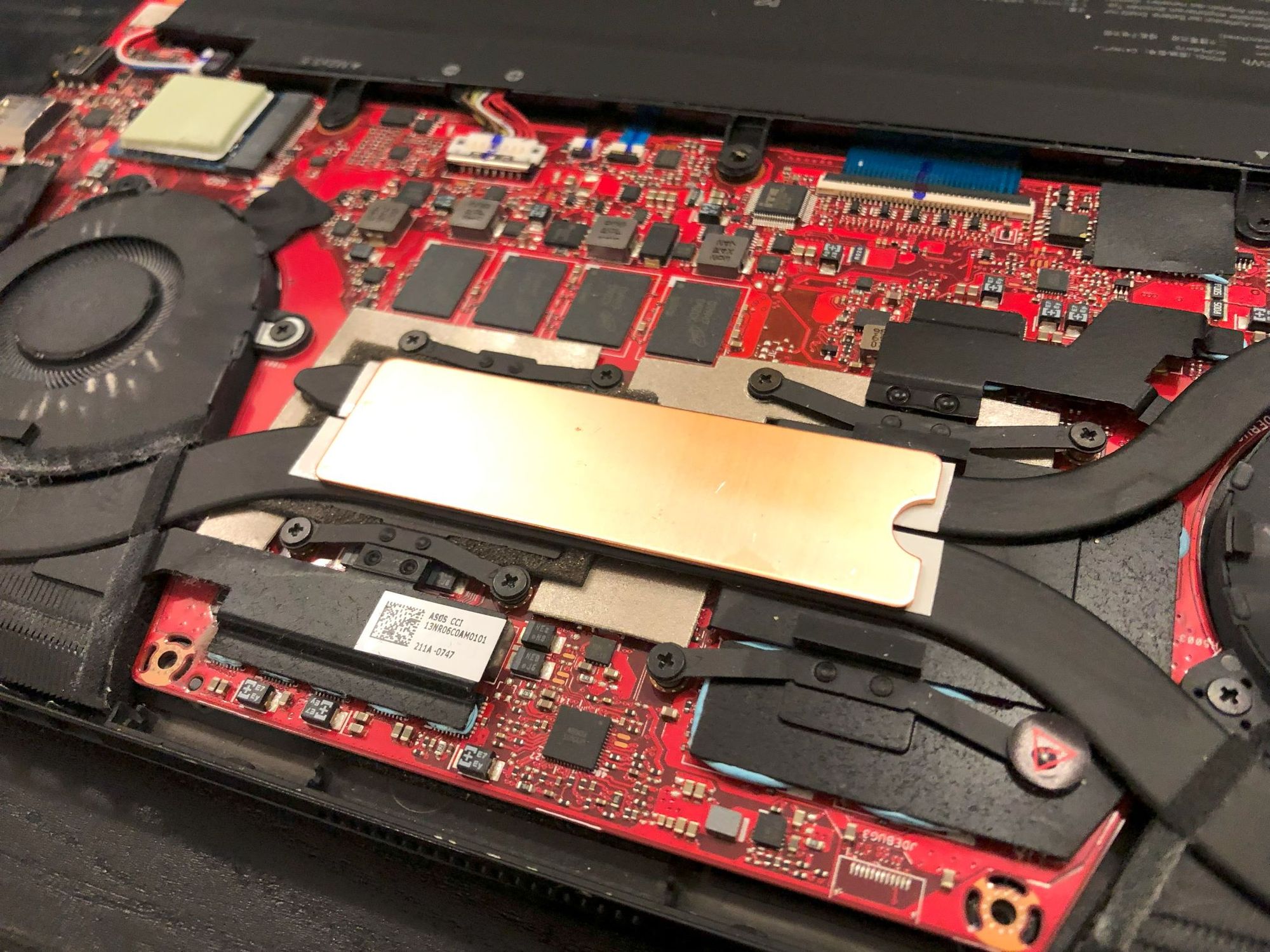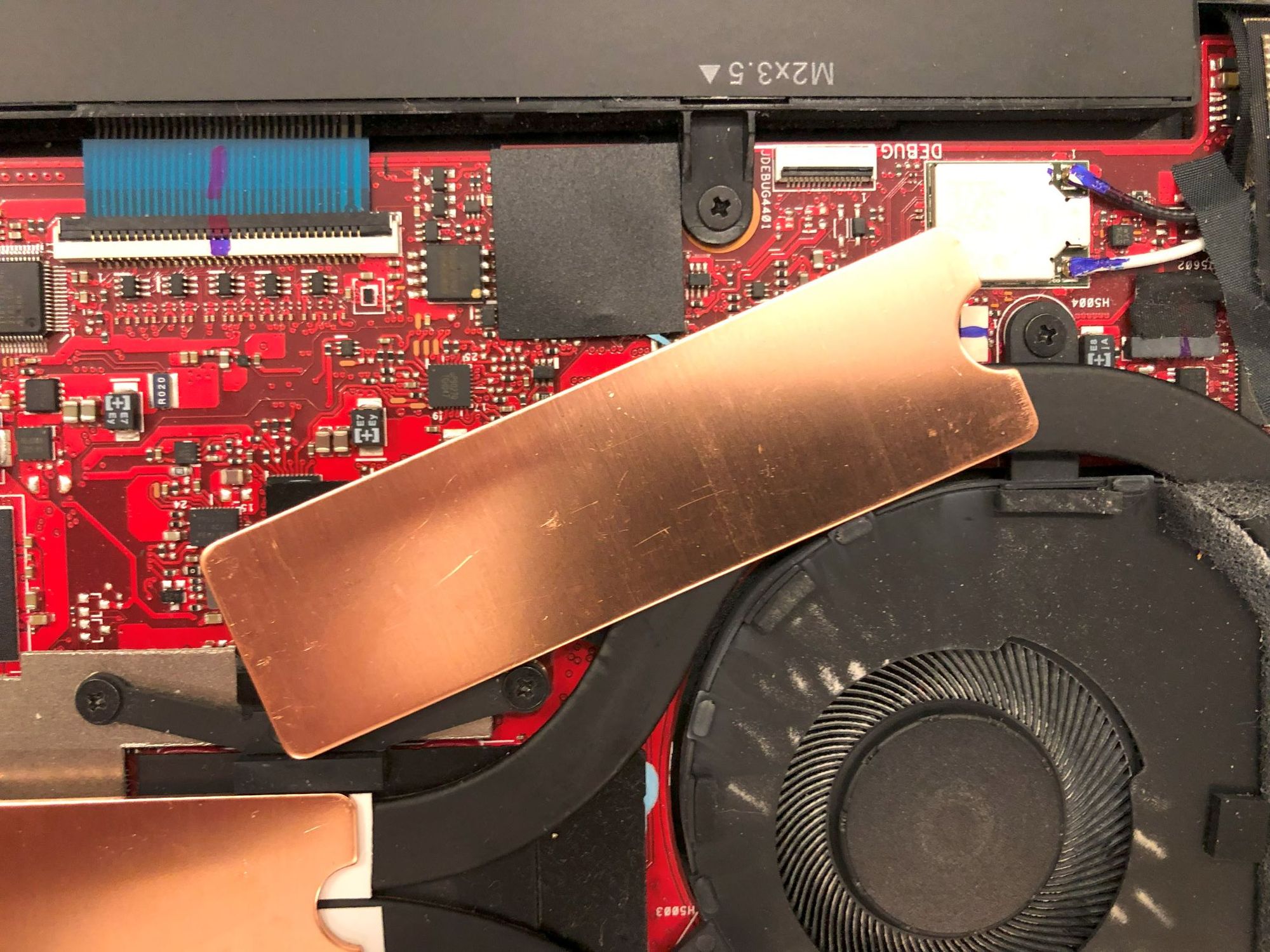Asus Flow X13 (2021) Cooling Mod

The Asus Flow X13 is a very interesting laptop. Launched in 2021, it packs a lot of performance into a 13-inch form-factor. With very thin bezels around its monitor, it actually comes very close matching a 14-inch ThinkPad in terms of the size of its screen, too!
However, the 2021 edition has especially poor thermal performance. It typically runs hot, with the CPU being 75°C - 85°C even with low-intensity tasks like web browsing, video streaming, just working on coding (ie: text files). While this is totally fine and within acceptable operating temperatures for the CPU itself, it's actually a huge waste of precious battery power to put so much energy into making this laptop work double-duty as a room heater. I'd rather have more run time with the laptop. Edit/Correction/Clarification: A fellow Flow X13 community member pointed out that I mischaracterized the physics here when I first published it a few hours ago. Let's try putting it another way. Since my system was overheating the CPU, or basically failing to cool it fast enough, it was also somewhat quickly getting performance-throttled. The first "I'd rather" is actually "I'd rather get that heat/energy managed better so that the CPU doesn't choke", followed by a complimentary "I also wish for better battery life – less wasted energy" which can only realistically be achieved by the software mod of reducing wattage and/or voltage through various tweaks. Many of those tweaks involve somewhat reduced performance, too. The expanded plan in my head was: a combination of improved heat management (allowing more capacity for "CPU boosting") and reduced power usage (allows smaller bursts of "CPU boosting", also reduces fan usage, also reduces heat) will overall combine into longer run time.
Extra data: I got an extra data point (from another Flow X13 community member) who reported "my X13 (2021 model) runs at around ambient plus 15 °C to 20 °C max when doing light duty things (browsing, videos, text editing)" in reaction to seeing this post. I suppose that means I should really be seeing temperatures more like 36 °C to 42 °C when my system is doing light-duty stuff since my ambient temperature is usually between 21°C to 22 °C. I take this as a sign that I should also renew both the thermal paste (GPU, RAM and other chipsets) and the liquid metal (CPU). They're probably not transferring heat all that well anymore.
NVMe Heatsink Cooling Modification
My solution for improving the way the Flow X13 manages heat was inspired by a modification that "cbutters Tech" did with their machine, and improved upon it in some ways. The key parts are:
- NVMe-sized copper heat sinks
- Thermal tape
- Isopropyl alcohol; 70% concentration
- Q-tips & cotton pads
- Tweezers Set
An NVMe-sized heat sink is, coincidentally, roughly the same size as the heat pipes covering the CPU and GPU in the center. Thermal tape is very handy in sticking together the heat pipes with the heat sink on top.
Modification steps:
- Clean all contact surfaces with a small amount of isopropyl alcohol, using Q-tips for applying the alcohol and cotton pads to wipe things dry.
- Cut thermal tape, apply to heat pipes using tweezers. Its protective plastic needs to be removed, of course.
- Use tweezers to extract the copper heat sinks from their packaging - avoid getting finger oils on the "main surfaces".
- Stick the copper heat sink to the sticky heat tape.
- Repeat as desired.
I actually ended up with a pair of NVMe heat sinks, so I placed the second one at an odd angle to draw heat from the heat pipe and some small chips that also wanted heat sinking (covered by thermal paste and also connected to the heat pipes).
My results from having just "the center" heat sink applied: the CPU's operating temperature dropped by around 10°C – doing "light duty" at around 65°C - 75°C on average.
With the addition of the 2nd heat sink: the CPU's operating temperature dropped by around another 10°C – doing "light duty" at around 55°C - 65°C on average.
Software Tweaks for Cooling
In addition to the hardware modification, I installed G-Helper, a great utility that provides superior handling of Ryzen CPUs. By tuning it for lower heat, lower wattage, and lower voltage, the system's operating temperature dropped even further – doing "light duty" at around 45°C - 55°C on average when I use the most aggressive "Silent Mode" profile.
The higher-performance "Balanced" profile in G-Helper, once tuned to my preferences, is better behaved than the default one by Asus - with the CPU hovering around 72°C and the fans working less hard at around 3000-4000 RPM instead of the usual 6000-7000 RPM that the default Asus profiles would do. Since the fans work less hard - there's a savings in battery power, which certainly helps to extend the run time, too.
Photos
I only took 3 photos of my process.



Prior Art in Cooling Modifications to the X13
"cbutters Tech" posted a video documenting their cooling modification for the Flow X13 (2023 model).
By keeping the CPU cooler, it has the opportunity to operate at higher levels of performance for longer bursts before getting throttled back due to thermal concerns. Their mod mainly used the following:
- A large copper heatsink
- Thermal glue
- Copper tape
The large copper heat sink wasn't appealing to me because it blocks access to the screws involved in disassembling the heat pipes - relevant when wanting to reapply thermal paste and liquid metal. Thermal glue also seemed "too permanent" for my tastes. The copper tape heat-spreader was a nice touch, though.